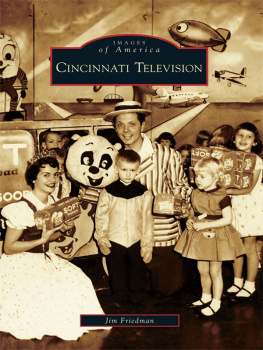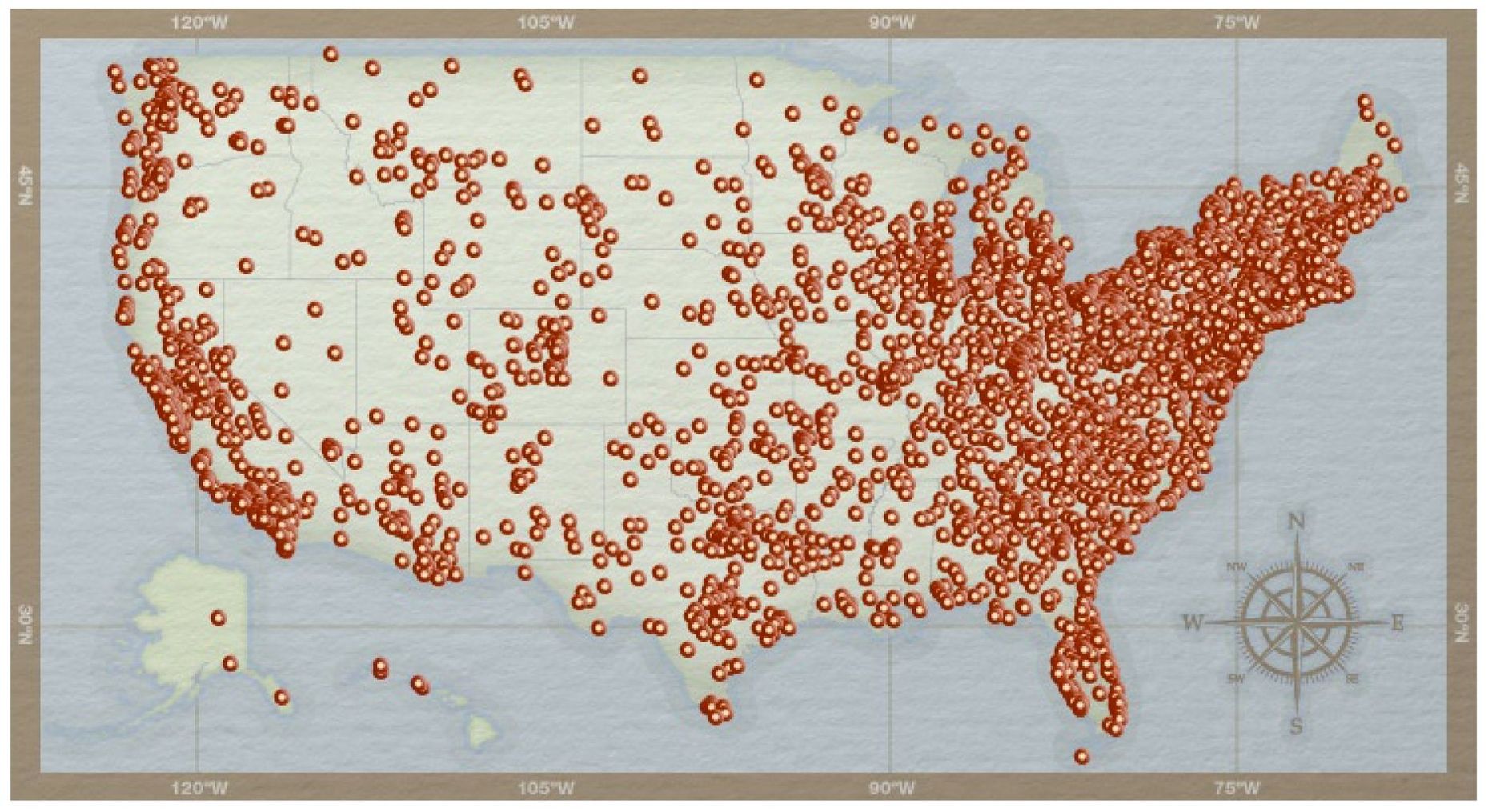ACKNOWLEDGMENTS
The music industry is much different than when I naively jumped into it in the halcyon days of the 45-rpm vinyl disc. In those times, disc jockeys, singers, and musicians appeared at local nightclubs, car dealerships, amusement parks, roller rinks, and department stores. Anyone could approach them to discuss the latest records.
When the mystique of the recording studio lured me behind the console, I met singer Wayne Perry, and we became the youngest professional production team in Cincinnati. We used Waynes soul band, the Young Breed, on our first recording session, along with James Browns horn players. Avco-Embassy Records of New York came calling. We were off and revolving!
Somewhere along the way, however, I left the wacky record business for books and journalism. But I never forgot the people I met in music. In fact, I continued to make new friends.
Appropriately, this book is a logical extension of my experiences. But I could not have written it without help. I thank Jim the Music Professor LaBarbara for taking an interest in the project and writing the foreword. Jim is a knowledgeable air personality who has lived the American music scene. He brings credibility to everything.
I also thank the late Harry Carlson, founder of Fraternity Records, who sat for hours in his suite at the Sheraton Gibson Hotel while I asked questions. Harry was a witty, kind, honest mana record business rarity. He is missed.
Other important contributors include Rusty York, musician extraordinary and owner of Jewel Recording in Mount Healthy; Shad OShea, former studio and label owner, independent producer, and author; Bill Watkins, my partner in song; singer Dale Wright, who has helped me so many times; producer Carl Edmondson, a talented guitarist and good friend; and Bob Armstrong of the Casinos, a gifted keyboard player who has contributed immensely to our local and national music culture.
Others who helped include Don Mangus, Terry Pastor, Jim Brown, Stephen Kelley, Shelly Nelson, Otis Williams, Len Gartner, Kent Goforth, Charles Spurling, Steve Lake, Rick Kennedy, Bob Snyder, Michael Banks, Dick Swaim, Rob Hegel, Jury Krytiuk, Steven Rosen, Beth and Steve ONeil, Bob Risch, Mick Patrick, Kim Cooper, Allen Howard, Julie Edmondson, Larry Goshorn, and Michael OBryant.
Finally, I thank my wife and line editor, Cheryl Bauer, for her invaluable advice, and my book editor, Melissa Basilone, for her patience and good judgment. Their guidance was essential.
BIBLIOGRAPHY
Gentry, Linnell. A History and Encyclopedia of Country, Western, and Gospel Music . Nashville: Clairmont Corporation, 1969.
Kennedy, Rick, and Randy McNutt. Little LabelsBig Sound: Small Record Companies and the Rise of American Music . Bloomington: Indiana University Press, 1999.
Lyons, Ruth. Remember with Me . New York: Doubleday and Company, 1969.
McNutt, Randy. Guitar Towns: A Journey to the Crossroads of Rock and Roll . Bloomington: Indiana University Press, 2002.
. Too Hot to Handle: An Illustrated Encyclopedia of American Recording Studios of the 20th Century . Hamilton, Ohio: HHP Books, 2001.
Radel, Cliff. Dee Felice Tribute Will Hit a Festive Note. The Cincinnati Enquirer , October 9, 1991.
Whitburn, Joel. Top Pop, 1955-1982 . Menomonee Falls, Wisconsin: Record Research, 1983.
. Top Country Singles, 1944-1988 . Menomonee falls, Wisconsin: Record Research, 1988.
. Top R&B Singles, 1942-1988 . Menomonee Falls, Wisconsin: Record Research, 1988.
Wolfe, Charles K. Classic Country: Legends of Country Music . New York: Routledge, 2001.
Find more books like this at
www.imagesofamerica.com
Search for your hometown history, your old
stomping grounds, and even your favorite sports team.
One
TURN YOUR RADIO ON
Lloyd Cowboy Copas arrived in Cincinnati in 1929 and by the 1940s was a vocalist on WLWs Boone County Jamboree . Later he sang in Pee Wee Kings Golden West Cowboys and joined the Grand Ole Opry . In 1945, he signed a recording contract with King Records. His hits included Filipino Baby and Signed, Sealed and Delivered. Copas also hosted a WKRC radio program, with accompanying book Cowboys Favorite Songs , as sung by our friend on the air. (Authors collection.)
Entertainers pose on this WLW circular sent to homes in the early 1940s. Their Boone County Jamboree presented talented country and western acts. The comic presence of Ma and Pa McCormick and Lazy Jim Day appealed to the rural members of the vast audience. Entrepreneur Powel Crosley Jr. founded WLW in 1922. Called the Nations Station, its powerful signal reached across many states and its varied programs, including Moon River , entertained millions of people. Many stars and famous people performed on the station, including Red Skelton, Eddie Albert, Rosemary and Betty Clooney, Homer and Jethro, Chet Atkins, the Mills Brothers, and Fats Waller. In 1942, Andy Williams, then only 11 years old, sang on the 15-minute Time to Shine show before heading to school. (Authors collection.)
Ruby Wright, a native of Anderson, Indiana, started singing professionally in her home state in 1930. Later she married bandleader Barney Rapp and toured the nation with his group, the New Englanders. Eventually they settled in Cincinnati and performed at the Lookout House in northern Kentucky and at area hotels and nightclubs. In 1952, Wright joined the staff of WLW and WLW-T. She hosted a radio show, Dixieland Unlimited , and later recorded a regional hit with Ruth Lyonss Lets Light the Christmas Tree for Fraternity Records. For 20 years she appeared on television shows hosted by Lyons and Bob Braun, and became one of Cincinnatis most recognizable television personalities. Before Rapp left the music business to become a local travel agent, he replaced his wife in the band with a younger Cincinnati singer, Doris von Kappelhoff, who changed her name to Doris Day. (Authors collection.)
Boone County Jamboree became one of WLWs more popular programs in the 1940s. Although now remembered for its hot country acts, the show also included some popular singers such as the Williams Brothers. The shows material featured cowboy songs, home songs, western songs, and mountain songs in an era when they were considered individual genres. They now fall under the umbrella of country music. The Jamboree continued until it gave way to a more modern program, the Midwestern Hayride . (Authors collection.)
















